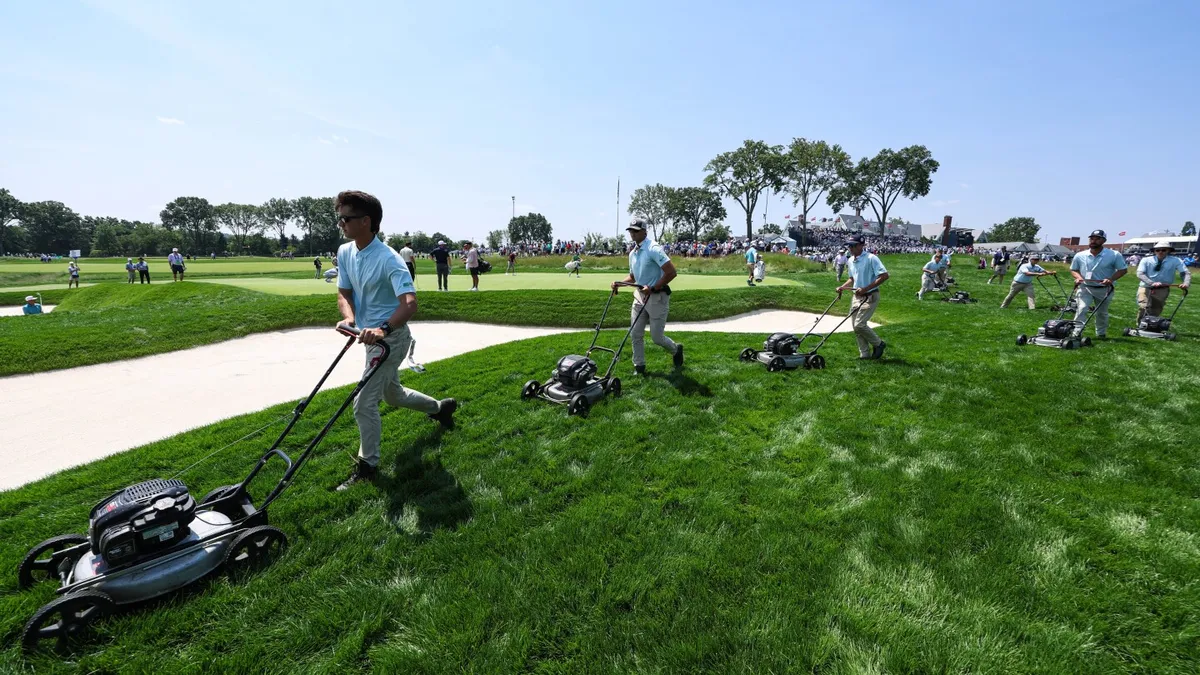
The U.S. Open has long been recognized for its challenging golf courses, and this year's venue, Oakmont Country Club, is no exception. Known for its tall, thick rough, Oakmont presents a formidable challenge for competitors. The course features a robust mixture of Kentucky bluegrass, rye, and poa annua, with the rough maintained at approximately 5 inches in height. This relentless and well-manicured rough is designed to absorb any wayward shots, leaving players in a predicament. Some competitors have humorously suggested that the rough feels closer to 9 inches in height, amplifying the difficulty of the course.
Among the competitors is Jackson Koivun, a standout junior from Auburn University who recently climbed to the top of the World Amateur Golf Ranking. During practice rounds, Koivun lost a golf ball to the rough on the 10th hole, highlighting the challenges faced by players on this demanding course. He is not alone; fellow golfers like Bryson DeChambeau and Preston Summerhays have also experienced the frustration of lost drives in the thick rough, with their balls disappearing off the right side of the 14th fairway. The struggle to locate errant shots has become a common theme among players and their caddies, who have reported spending significant time searching in the dense grass.
The rough at Oakmont is thriving, thanks in part to a record-breaking rainfall in Allegheny County this past May. Additionally, recent renovations by architect Gil Hanse have resulted in slightly wider fairways, allowing the USGA to adopt a more aggressive setup for the tournament. Unlike the previous U.S. Open held at Oakmont nine years ago, the graduated rough has been eliminated, making the challenge even more daunting for players.
The thick rough brings with it a heightened responsibility for the spotters, the unsung heroes of the tournament. Each hole will feature four to six skilled spotters, along with a dozen marshals, tasked with locating balls and keeping the game moving. One marshal aptly described the anticipation of watching tee shots as akin to "watching ketchup come out of a Heinz bottle." Starting Thursday, a dedicated team of 330 spotters will be deployed to assist in the search for lost balls, ensuring that players have the best chance of finding their errant shots.
Renowned golfers like Rory McIlroy have voiced their appreciation for the spotters, recalling previous outings at Oakmont where assistance was scarce. McIlroy noted the difficulty of locating a ball that strays off the fairway, emphasizing the vital role that spotters play in this challenging environment. Ben An humorously remarked that even an 18-handicapper would struggle to finish a round without help, with one player recounting his experience of losing four balls in just one hole and subsequently walking off the course.
Reflecting on the history of the U.S. Open, one can't help but recall moments like that of Tiger Woods at the 2003 Open Championship, where he famously lost a drive on the very first hole. Despite an extensive search with marshals, Woods had to return to the tee, ultimately finishing just two shots behind the leader. The USGA's chief championships officer, John Bodenhamer, expressed confidence in the spotters' ability to locate lost balls but acknowledged that there are no guarantees in such challenging conditions.
As players prepare to take on the thick rough of Oakmont, the understanding of the course’s challenges becomes paramount. Many balls will require players to take challenging shots, often needing to play with limited visibility of the ball. Notable players, including Collin Morikawa, have commented on the extraordinary thickness of the rough, explaining that it requires a steep swing to dislodge the ball, often leading to deeper contact with the ground. McIlroy summed it up well: “The person with the most patience and the best attitude this week is the one that’s going to win.” While skill and technique are crucial, a touch of luck will undoubtedly play a role in navigating the complexities of Oakmont’s rough.